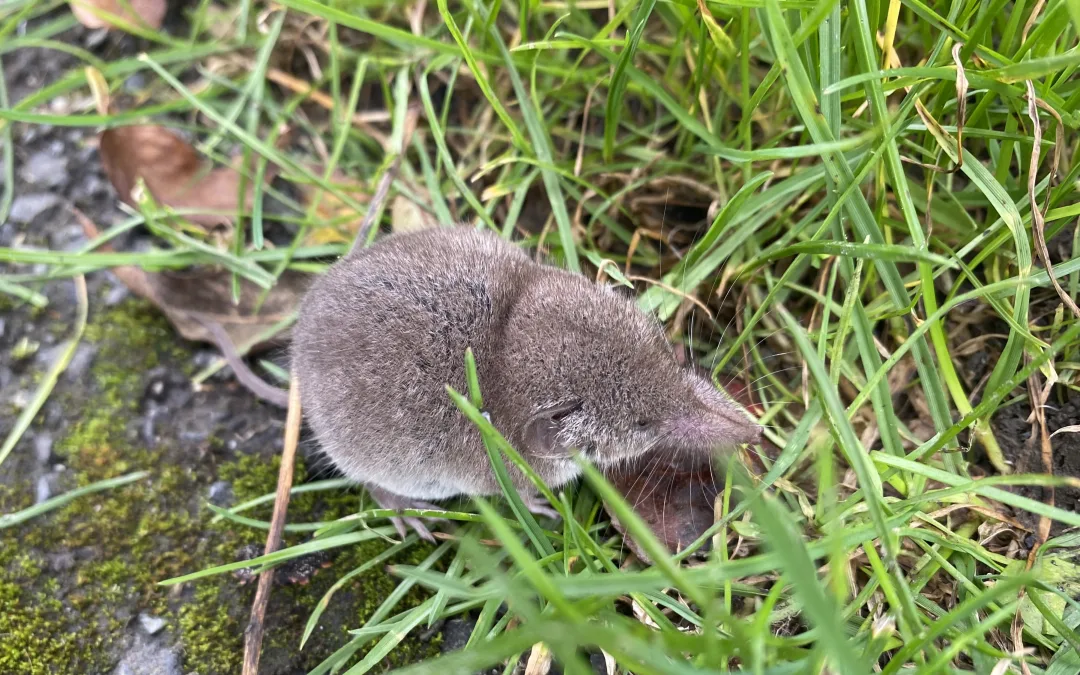Pygmy Shrew
Dallóg fhraoigh
| Irish name: | Dallóg fhraoigh |
| See it in: | All year round |
| Biodiversity Ireland Species Profile: | Pygmy Shrew |
The Pygmy Shrew is Ireland’s smallest resident mammal, with a body reaching only 4.5cm to 6cm in length.
Although it appears quite similar to a mouse, it is completely unrelated and isn’t even part of the rodent family. The shrews are insectivores, meaning they mostly feed on insects, earthworms and other invertebrates. They’re more closely related to hedgehogs and moles.
Along with it’s minute size, the Pygmy Shrew can be distinguished from a mouse by it’s long slender snout, it’s realtively shorter tail and less prominent ears. It also has a very different manner to a mouse and can seem more “bumbling” as it forages through the grass. It has poor eyesight and hearing, so it snuffles about, searching for insects. The Irish name for the Pygmy Shrew – Dallóg fhraoigh, describes this. It translates to “Blind-man of the heather”.
The Pygmy Shrew is widespread across Ireland, likely having arrived here about 5,000 years ago with early human settlers to the island. The Pygmy Shrew was the only shrew species known to be in Ireland up to 2007, when evidence was found that the Greater White Toothed Shrew had been recently introduced. Since 2007, the Greater White Toothed Shrew has expanded rapidly across the island too and we confirmed it’s presence in Ardclough this year (2023). Being about 3 times larger and sharing the same diet, the Greater White Toothed outcompetes the Pygmy Shrew and appears likely to push it into extinction in Ireland.
The Pygmy Shrew has a super fast metabolism with a heartrate above 1,200 beats per minute and a lifespan of only about a year. It needs to consume more than it’s own bodyweight in insects each day and can actually starve in as little as 2 hours. Due to this, it has to be active both day and night and so it only sleep in naps of about 15 to 20 minutes.
The Pygmy Shrew tends to live in woodlands, along hedgerows or in heavy grassy verges. It’s unlikely to be found in or about our homes, although if you have a cat, the Pygmy Shrew has likely featured among the trophies that it has brought home. In Ardclough, shrews seem to do well in the dense verges along the canal. On a quiet evening you will often hear high-pitched chirps and squeaks from the verges as shrews forage deep within them.
